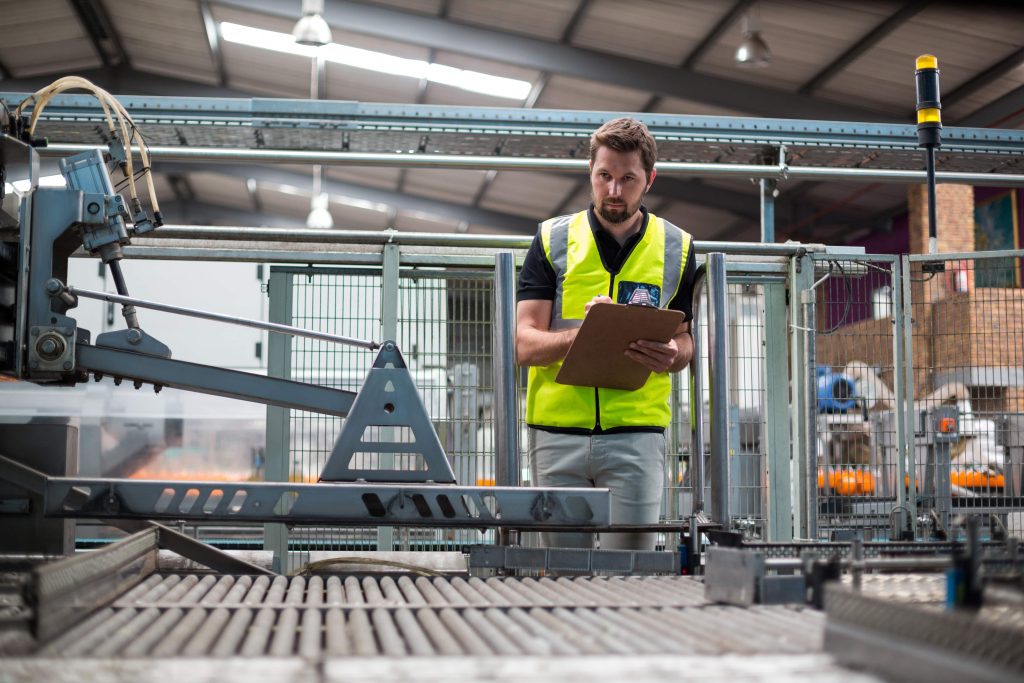Manufacturing essentials | Machine guarding

Manufacturing activities are high risk. On average 19 workers are killed every year in manufacturing incidents.
Annually, around 46,000 workers in British manufacturing suffer a non-fatal work injury. More than 3,100 of the injuries are major and about 4,100 workers are off work for several days.
Machine contact
In 1973, 68 deaths were linked to contact with moving machinery. While there have been much fewer incidents since the introduction of the Health and Safety at Work etc. Act (HSWA) 1974, the figures are still most troubling.
The fact remains that working around machines with exposed moving parts carries the potential for serious if not fatal injury. Limbs coming into contact with moving parts often end up being drawn in and crushed or severed.
Indeed, workers all too often become entangled, struck or trapped. Nearly 20% of the fatalities in manufacturing are caused by contact with moving machine parts. Over the last five years contact with machinery accounted for over 10% of non-fatal injuries. In 2014-15 machine contact accounted for 14% of the reported non-fatal injuries.
Safeguarding workers
Manufacturing employers have a duty under the HSWA 1974 to remove or reduce workers’ exposure to risk of injury. Employers must also make sure machines are adequately guarded under the main equipment regulation: the Provision and Use of Work Equipment Regulations (PUWER) 1998.
Under PUWER, access to dangerous machine parts must be prevented where practicable. The word “practicable” means the only acceptable reason for not complying with PUWER is that it was not technically possible to do so. Cost is not a relevant factor.
However, machinery guarding should only be the final option in a preferred order of safety controls. For example, risks should be removed or reduced by working in a different, safer way. This may involve avoiding the risky activity altogether or choosing a safer type of machine that is less likely to expose workers to risk of injury.
As the final option, employers have a duty to implement certain measures in the following order of merit:
- Fixed enclosed guards
- Other protective guards or devices such as interlocked guards or pressure sensitive mats
- Protective appliances such as holders or push sticks
- Information, instruction, training and supervision
Risk reduction
Risk reduction is based on preventing contact with machinery. You therefore need to make sure your machines are safe and adequately guarded. The way to do this is by a thorough risk assessment.
Unfortunately, unsafe machinery is still being sold and used…
The Supply of Machinery (Safety) Regulations 2008 provide that machines should be made safe at the design or drawing-board stage. However, research shows profitability sometimes means no more than lip service is paid to the regulations.
Manufacturing employers please note: shysters may still provide safety documents and put CE marks on machines without dealing with any safety issues! You cannot therefore rely on the fact regulations say machines should be supplied with appropriate guards.
Risk assessments should also check for risks during cleaning or maintenance because incidents are often more likely during maintenance than normal use. Things are best considered in front of the machine itself and with input from operators rather than from behind a desk.
Human error and misuse
Employers need to think beyond machines and consider human factors – people arguably need greater attention as their behaviour is most unpredictable. Have you considered whether Terry Halfwit might be operating one of your machines?!
To be more serious, operators usually have some form of reasoning when deciding to ignore or remove a machine’s safety controls, however mistaken.
Manufacturers have much to consider. Most incidents with machines involve a mix of unsafe hardware, poor systems of work and human factors. Contact WorkNest to make sure you properly guard against the risks from machines (and Terry Halfwit)!
Need support?
If you’re looking for professional support to help reduce the risk accidents and improve safety measures in your workplace, WorkNest can help.
For more information, call 0345 226 8393 or request your free consultation using the button below.
